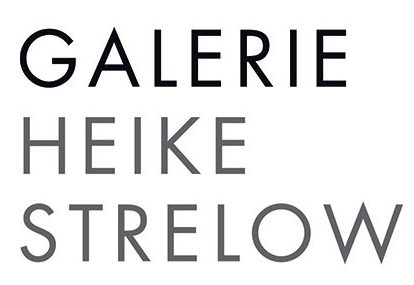DAS WEIBLICHE
14 July 2023 — 2 September 2023
At a time when gender roles are being redefined and gender equality is being sought, it is also necessary to reflect on what constitutes the concept of the feminine (des Weiblichen) today. The topic is very complex, as it is strongly determined by social constructions and cultural norms that are subject to permanent change. Even though the topic is ultimately inseparable from the role of women in society, the exhibition, which is to be the prelude to a series of group exhibitions on this topic, would like to focus primarily on the physical aspects of the feminine. This is connected with a variety of questions that have always been of importance across epochs and cultures and are still controversially discussed today.
The exhibition DAS WEIBLICHE shows works by 5 artists and 2 artists from Great Britain, Spain, Venezuela/South Korea and the USA, whose paintings and sculptures deal with different aspects of the visualisation, perception and social reception of the female body.
With her “Belly Paintings”, in which she imagines women in animal bodies, the American artist Dana Sherwood (*1977) not only addresses the complex relationship between humans and animals, which depends on mutual ecological support and shelter. The female nude, which has established itself in the sensual-magical world of the animal belly, at the same time refers to the concept of the Female Principle, which is associated with qualities such as receptivity, caring, creativity and intuition. The female body here becomes a symbol for creativity.
This connects her with the Spanish artist Lara Padilla (*1990) who powerfully expresses female creativity in her expressive paintings. Her figures partly merge with animal heads and thus refer to mythological traditions of different cultures. With playful ease, her paintings emphasise the transformative and life-giving nature of the female body and the female experience. At the same time, Padilla’s paintings, which also tell of her fascination with dancing, can be seen as a hymn to freedom and female self-determination.
Both Sherwood and Padilla, as women, draw on the female nude in their paintings and thus on a classic theme of art history, occupying the subject with their pictures from a female point of view. However, artists such as Sam Jackson (Great Britain, *1977) prove that the female nude can also be a homage to the beauty, grace and sensuality of the female body from a male point of view, that the male gaze on the naked female body can certainly be guided by an awareness of intimacy, closeness and vulnerability. Jackson’s nude painting is closely related to his portraits, in which he goes in search of the people behind the images.
At the same time, there has been an intensified discussion about the representation of the female nude in art for some years now. There is a growing awareness of the need for a more inclusive, diverse and respectful representation of bodies and gender identities. Artists, feminist art movements and activists are advocating for a re-evaluation of traditional representations of the female nude and calling for a greater diversity of body representations and perspectives. Ela Fidalgo (Spain, *1993) opens up a new view of the beauty of imperfection and diversity with her large-format paintings, which she not only works on with acrylic paint, but also embroiders and assembles from individual pieces of fabric using a patchwork technique.
Ana Dévora (Spain,*1987), on the other hand, addresses the increasing taboo of the naked body and sexuality in the media. With her project “Pattern interrupt”, she tries to break through established patterns in order to achieve freedom and creativity, and questions social stereotypes and models imposed by the media and social networks. With her work, Dévora wants to raise awareness of how censorship and self-censorship can limit the representation of naked bodies in the digital world and promote more diversity and acceptance, as the censorship of certain body parts, such as female nipples and genitalia, can even reinforce the sexualisation and tabooisation of the female body.
The artistic work of Alejandro Monge (Spain,*1988) is characterised by a socio-critical view – and so his masterfully crafted sculptures shown in the exhibition can also be read as a critical examination of the female image of beauty. While his small “Little Shibuya”, cast in resin, critically questions the image of girls and women in a youth culture influenced by Japanese mangas, the three interracial portraits of women (Inverse Shape), which look as if they were carved out of stone, poetically address the question of the origin of life and beauty.
Finally, Suwon Lee (Venezuela/South Korea, *1977) reminds us with her multi-part work “Body of Light” that female identity is a constant struggle for balance between self-perception and social coding. In the photo series based on self-portraits, Lee not only explores the moment of privacy and publicity, but also questions her own body image and female identity.

